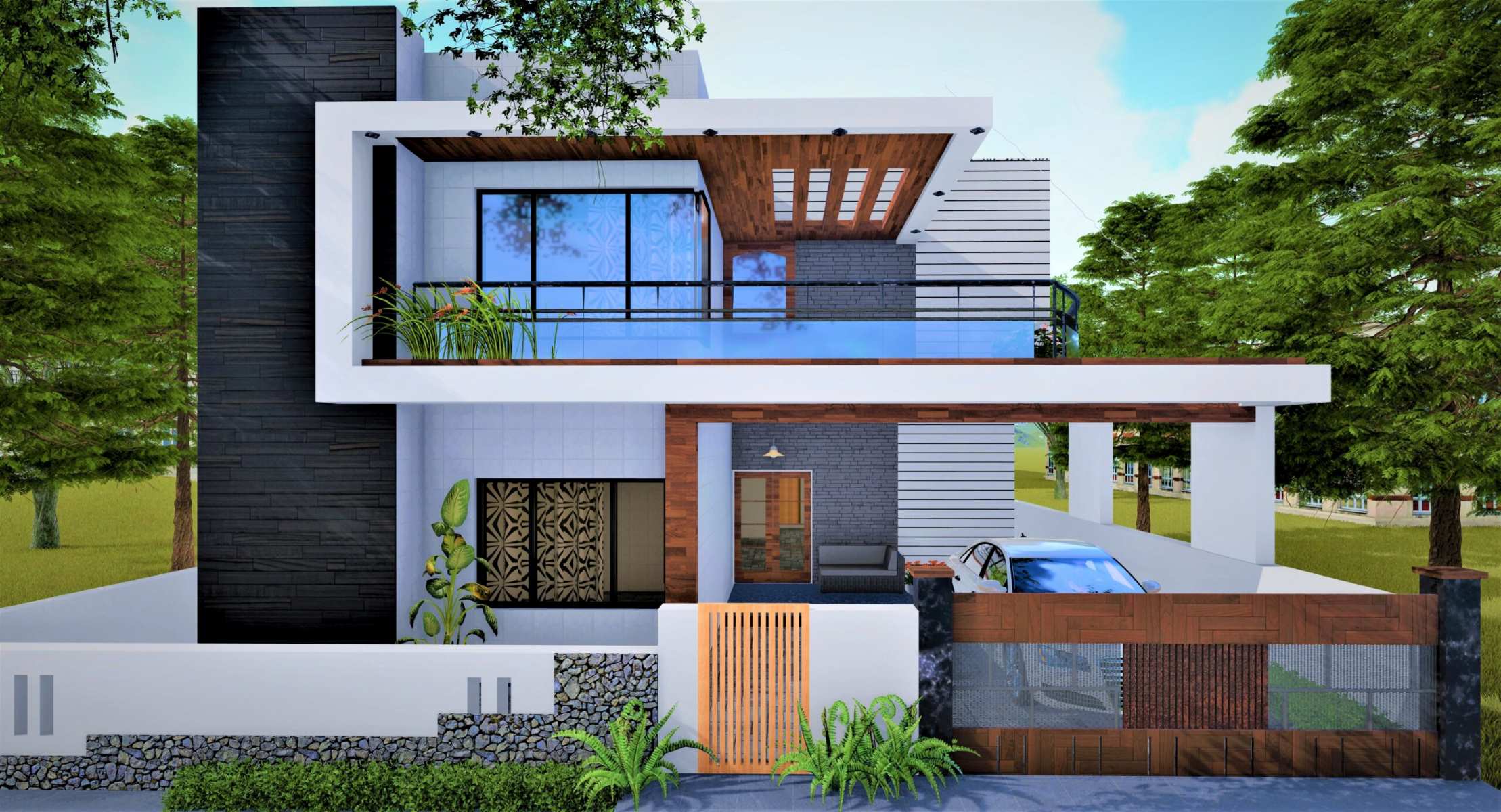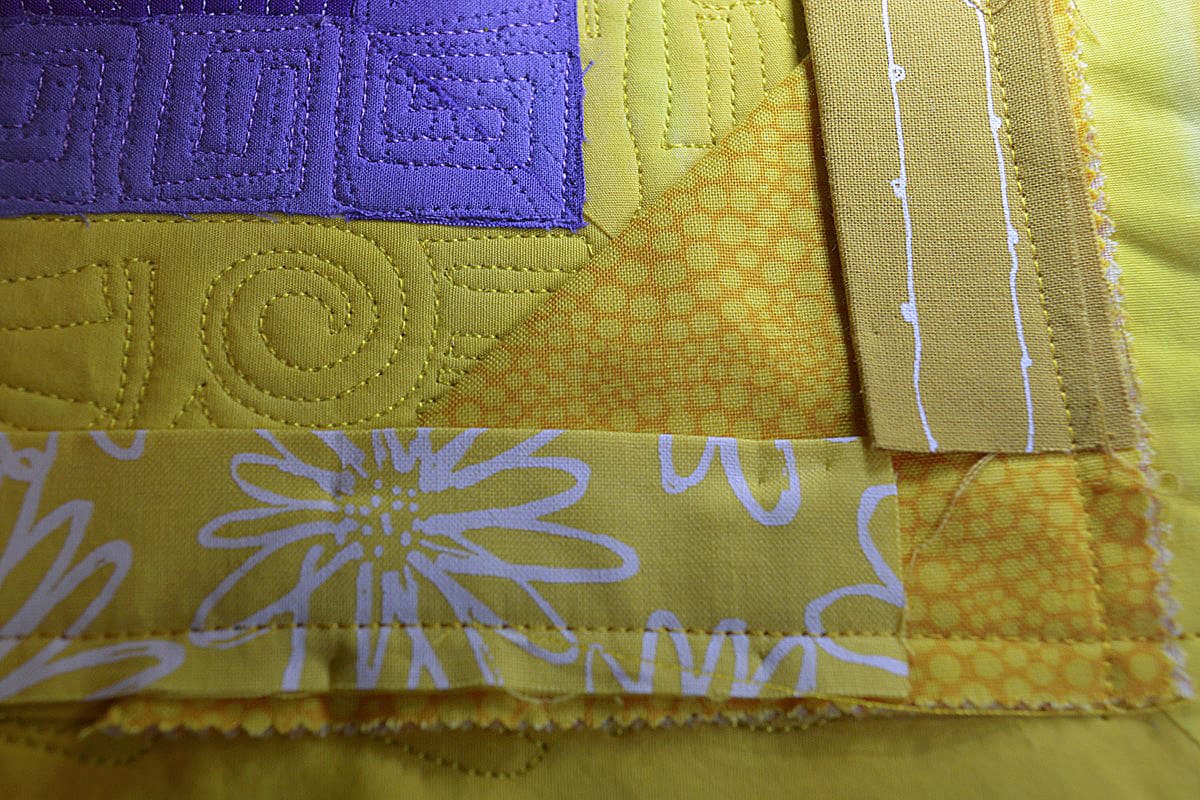Home>diy>Architecture & Design>How To Design A North-Facing House


Architecture & Design
How To Design A North-Facing House
Modified: January 24, 2024
Learn the principles of architecture design for a North-Facing House. Discover expert tips and ideas to create a functional and aesthetically pleasing home.
(Many of the links in this article redirect to a specific reviewed product. Your purchase of these products through affiliate links helps to generate commission for Storables.com, at no extra cost. Learn more)
Introduction
Designing a house that faces north comes with its own set of challenges and considerations. The orientation of a house plays a crucial role in determining its energy efficiency, natural lighting, and overall comfort. A north-facing house presents unique opportunities to maximize natural light and make the most of its surroundings.
In this article, we will explore the factors to consider when designing a north-facing house and provide practical tips on how to optimize its functionality and aesthetic appeal. Whether you are a homeowner or an architect, this guide will help you create a beautiful and sustainable living space that takes full advantage of the northern exposure.
Key Takeaways:
- Embrace the unique challenges and opportunities of designing a north-facing house by strategically maximizing natural light, utilizing thermal mass, and integrating thoughtful landscaping and interior design choices.
- Achieve a harmonious balance of aesthetics, functionality, and energy efficiency in a north-facing house through careful consideration of sun path analysis, window placement, insulation, and external and interior design elements.
Factors to Consider in Designing a North-Facing House
When designing a north-facing house, there are several crucial factors to keep in mind. These considerations will help you make the most of the orientation and create a comfortable and energy-efficient living space.
1. Sun Path and Shadow Analysis
Understanding the sun’s path throughout the day and how shadows will fall on your property is essential for designing a north-facing house. Conduct a sun path and shadow analysis to determine the best placement for windows, doors, and outdoor living spaces. This analysis will help you optimize natural light while minimizing shadows cast by neighboring buildings or trees.
2. Window Placement
Since a north-facing house receives the least direct sunlight, strategically placing windows becomes crucial. Designing larger windows on the northern facade will allow ample natural light to enter the living spaces throughout the day. Consider incorporating floor-to-ceiling windows or installing skylights to maximize daylight penetration.
3. Insulation and Energy Efficiency
Proper insulation is key to maintaining a comfortable temperature inside a north-facing house. Insulate exterior walls, roof, and floors to minimize heat loss during colder months. Additionally, invest in energy-efficient windows that provide both thermal insulation and soundproofing.
4. Ventilation
Proper ventilation is essential to maintain good air quality and regulate temperature in a north-facing house. Consider incorporating windows that can be opened to allow for natural airflow. Additionally, consider installing a mechanical ventilation system that circulates fresh air throughout the house.
5. Outdoor Spaces and Landscaping
Designing outdoor spaces that complement a north-facing house is important for creating a harmonious environment. Consider incorporating covered outdoor areas, such as a patio or deck, that provide shade during hotter months while still allowing natural light to enter the house.
In terms of landscaping, choose plants that thrive in shaded or partially shaded areas. Tall trees or shrubs can also provide additional shade while adding beauty to the surroundings.
6. Privacy
While maximizing natural light is important, privacy should also be a consideration when designing a north-facing house. Strategically place windows and consider using frosted or tinted glass to maintain privacy without compromising daylight intake.
By taking these factors into account, you can design a north-facing house that is not only aesthetically pleasing but also comfortable and energy-efficient. In the next sections, we will explore specific strategies for maximizing natural light and utilizing thermal mass to regulate temperature in a north-facing house.
Maximizing Natural Light in a North-Facing House
One of the main challenges in designing a north-facing house is maximizing natural light. With proper planning and thoughtful design choices, you can still create a bright and airy interior. Here are some strategies to maximize natural light in a north-facing house:
Read also: 10 Amazing North Face Lunch Box for 2024
1. Window Placement
Strategically placing windows is crucial in bringing as much natural light as possible into a north-facing house. Design larger windows on the northern facade to allow daylight to penetrate deeply into the rooms. Consider using floor-to-ceiling windows or installing skylights to bring in additional light from above.
2. Reflective Surfaces
Strategically placing reflective surfaces can help bounce natural light around the interior of a north-facing house. Incorporate mirrors, glass partitions, or light-colored furniture and accessories to reflect and amplify the natural light that enters the space.
3. Light-colored Walls and Ceilings
Opt for light-colored paint or wallpaper on the walls and ceilings to create a sense of brightness and amplify the natural light in a north-facing house. Light colors reflect light better than dark colors, helping to make the space feel more open and airy.
4. Decorative Lighting
Supplement natural light with well-designed artificial lighting. Use a combination of ambient, task, and accent lighting to create layers of light throughout the house. This ensures that even in darker areas or during nighttime, the space feels well-lit and inviting.
5. Light-colored Flooring
Choose light-colored flooring materials, such as light hardwood or light-colored tiles, to further enhance the reflection of natural light in a north-facing house. Light-colored flooring can help brighten up the space and create a sense of openness.
6. Open Floor Plan
Consider an open floor plan design that allows natural light to flow freely from one area to another in a north-facing house. Removing unnecessary walls and barriers can help maximize the reach of natural light and create a more spacious and airy atmosphere.
By implementing these strategies, you can bring in an abundance of natural light into a north-facing house and create a welcoming and well-lit interior. In the next section, we will explore the concept of utilizing thermal mass to regulate temperature in a north-facing house.
Utilizing Thermal Mass for Temperature Regulation
Temperature regulation is a key consideration when designing a north-facing house. While north-facing houses receive less direct sunlight, they can still benefit from utilizing thermal mass to regulate indoor temperatures effectively. Thermal mass refers to materials that absorb and store heat, releasing it slowly to help maintain a consistent temperature. Here are some ways to utilize thermal mass for temperature regulation in a north-facing house:
1. Flooring Choices
Choose flooring materials with high thermal mass, such as concrete, stone, or tile, for areas that receive direct sunlight in a north-facing house. These materials can absorb heat during the day and release it gradually during the cooler evenings, helping to stabilize indoor temperatures.
2. Masonry Walls
Incorporate masonry walls into the design of a north-facing house. Materials like brick, stone, or rammed earth have excellent thermal mass properties. They can absorb heat during the day and release it slowly to keep the interior cool during warmer months or help retain warmth during colder months.
3. Thermal Mass Placement
Strategically place thermal mass materials in areas that receive direct sunlight, such as near windows or in sunrooms. This maximizes their exposure to natural light and allows them to absorb and store heat effectively.
4. Insulation
While thermal mass can regulate temperature, it’s important to combine it with proper insulation to optimize energy efficiency. Insulate exterior walls, roof, and floors to minimize heat loss or gain, ensuring that the benefits of thermal mass are not negated by poor insulation.
5. Window Treatments
During warmer months, consider using window treatments such as blinds or curtains to control the amount of heat entering a north-facing house. Close the blinds or curtains during the hottest parts of the day to prevent excessive heat gain, and open them in the evenings to allow for natural ventilation and heat dissipation.
Read more: How To Connect A Porch Roof To House
6. Passive Solar Design
Integrate passive solar design principles into the overall architecture of a north-facing house. This includes incorporating features like overhangs or shading devices to control the amount of direct sunlight entering the house, ensuring that thermal mass materials are exposed to sunlight when needed, and optimizing natural ventilation for passive cooling.
By utilizing thermal mass effectively, a north-facing house can maintain a more stable and comfortable indoor temperature throughout the year. In the next sections, we will explore landscaping and external design considerations, as well as interior design tips specifically tailored for a north-facing house.
Landscaping and External Design Considerations
When designing a north-facing house, the exterior design and landscaping play a vital role in enhancing the overall aesthetics and functionality. Here are some landscaping and external design considerations specifically tailored for a north-facing house:
1. Extending Outdoor Living Spaces
Create functional outdoor living spaces that can be enjoyed even in limited sunlight. Design a patio, deck, or terrace on the northern side of the house to take advantage of any available sunlight. Incorporate features like pergolas, awnings, or retractable shade sails to provide shade during hotter months while still allowing natural light to filter through.
2. Native Plant Selection
Choose native plants that thrive in shaded or partially shaded areas for the landscaping around a north-facing house. Native plants are well adapted to the local climate and require less maintenance. They can add beauty, texture, and color to the landscape while complementing the overall design of the house.
Read more: How To Add A Porch To Your House
3. Strategic Shading
To prevent overheating during warmer months, consider incorporating natural shade elements such as deciduous trees, pergolas with climbing plants, or strategically placed privacy screens. These features not only provide shade but also serve as aesthetic enhancements to the landscaping.
4. Reflective Surfaces
Incorporate reflective surfaces, such as light-colored paving stones or gravel pathways, into the landscaping design. These surfaces help bounce natural light and create a brighter environment around the house.
5. Privacy and Visual Appeal
Ensure privacy without sacrificing natural light by using frosted or tinted glass for windows or incorporating decorative elements such as lattice screens or outdoor blinds. These features add visual interest to the exterior while maintaining a sense of privacy.
6. Water Features
Consider incorporating a water feature, such as a pond or a small fountain, into the landscaping design. Not only do water features add a calming and aesthetic element to the outdoor space, but they can also help create a cooling effect during warmer months.
By carefully considering and implementing these landscaping and external design considerations, you can enhance the overall appeal and functionality of a north-facing house. In the next section, we will explore interior design tips specifically tailored for maximizing the potential of a north-facing house.
Read more: How To Design Stairs In A House
Interior Design Tips for a North-Facing House
Designing the interior of a north-facing house requires careful consideration to create a cozy and well-lit living space. Here are some interior design tips specifically tailored for maximizing the potential of a north-facing house:
1. Light-color Palette
Opt for a light-color palette for the walls, ceiling, and furniture to create an open and airy feel. Light colors reflect natural light and make the space appear brighter. Consider shades of white, cream, pastels, or light neutrals to amplify the available light.
2. Feature Lighting
Choose light fixtures that provide both ambient and task lighting to compensate for the lack of direct sunlight in a north-facing house. Install a combination of ceiling lights, floor lamps, and table lamps to create a layered and well-lit atmosphere. Incorporate adjustable fixtures to allow for flexibility depending on the time of day and desired lighting levels.
3. Mirrors and Reflective Surfaces
Strategically place mirrors and reflective surfaces to bounce natural light around the rooms. Hang a large mirror opposite a window to create the illusion of more space and enhance the lighting effect. Incorporate reflective materials like glass, mirrored furniture, or metallic accents to further amplify the available light.
4. Window Treatments
When it comes to window treatments, opt for lighter fabrics or sheer curtains that allow natural light to filter through while maintaining privacy. Avoid heavy drapes that block out precious light in a north-facing house. Consider using blinds or shades that can be raised fully to maximize daylight penetration.
5. Indoor Plants
Bring the beauty of nature indoors by incorporating indoor plants into the space. Choose plants that thrive in low-light conditions, such as peace lilies, snake plants, or ferns. Not only do they add a touch of greenery, but they also help improve air quality and contribute to a calming atmosphere.
6. Accent Colors and Texture
Add pops of color and texture to the interior by incorporating accent pieces like cushions, rugs, or artwork. Choose bold colors or interesting patterns to make a statement and create visual interest. Texture-rich materials like wool, velvet, or woven fabrics can also add depth and warmth to the space.
By following these interior design tips, you can create a welcoming and well-lit living space in a north-facing house. Remember to adapt the design choices to your personal style and preferences to create a space that truly feels like home.
Conclusion
Designing a north-facing house may present some challenges, but with careful planning and thoughtful design choices, you can create a beautiful and functional living space. By considering factors such as sun path analysis, window placement, insulation, and ventilation, you can maximize natural light and energy efficiency in your home.
Utilizing thermal mass, such as with flooring choices and masonry walls, can help regulate indoor temperatures and contribute to a comfortable living environment. Strategic landscaping and external design considerations, such as extending outdoor living spaces, selecting native plants, and incorporating shading elements, can enhance the aesthetics and functionality of the exterior.
When it comes to the interior design, focus on light-color palettes, feature lighting, reflective surfaces, and window treatments that optimize natural light. Incorporating mirrors, indoor plants, and accent colors helps create a welcoming and visually appealing atmosphere.
Remember, the key to designing a successful north-facing house is finding the right balance between aesthetics, functionality, and energy efficiency. Consider your specific needs, lifestyle, and the unique characteristics of your property when making design decisions.
By following these tips and incorporating your personal style, you can transform a north-facing house into a comfortable, well-lit, and inviting home. Embrace the opportunities that a north-facing orientation provides and make the most of your living space.
Whether you are a homeowner or an architect, the knowledge and considerations shared in this article will help guide you in creating a north-facing house that is both practical and aesthetically pleasing. With careful attention to detail and a thoughtful approach, you can design a home that maximizes natural light, optimizes temperature regulation, and blends seamlessly with its surroundings.
Frequently Asked Questions about How To Design A North-Facing House
Was this page helpful?
At Storables.com, we guarantee accurate and reliable information. Our content, validated by Expert Board Contributors, is crafted following stringent Editorial Policies. We're committed to providing you with well-researched, expert-backed insights for all your informational needs.








0 thoughts on “How To Design A North-Facing House”